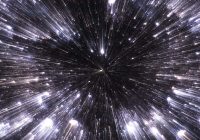

The Little Bang Theory
This is a venue to discuss ideas at the boundary of science, philosophy, and religion. The little bang theory in question is the proposal that humans could one day make their own “baby universe” in the lab — a DIY cosmos that could potentially evolve its own stars, planets and people. The site is run by Zeeya Merali, whose book, A Big Bang in a Little Room describes the nuts and bolts of how this ambitious feat might be achieved — and the ethics of whether such a task should be attempted.
Zeeya Merali is a freelance journalist and author whose work has appeared in Scientific American, Nature, New Scientist, and Discover, and on the BBC.
She has published two textbooks in collaboration with National Geographic. Her documentary, “Aperture Fever,” about amateur astronomy, was broadcast on The History Channel, UK. She also worked on the NOVA television series “The Fabric of the Cosmos”.
Merali received a first-class degree and Master’s in natural sciences from the University of Cambridge and a PhD in cosmology from Brown University. “A Big Bang in a Little Room,” is her first popular physics book.
Zeeya Merali also edits the Foundational Questions Institute website, where she blogs and co-hosts a physics podcast.
Supported by the John Templeton Foundation

Author Photo Credit: Maria Platt-Evans
author of Trespassing on Einstein's Lawn



